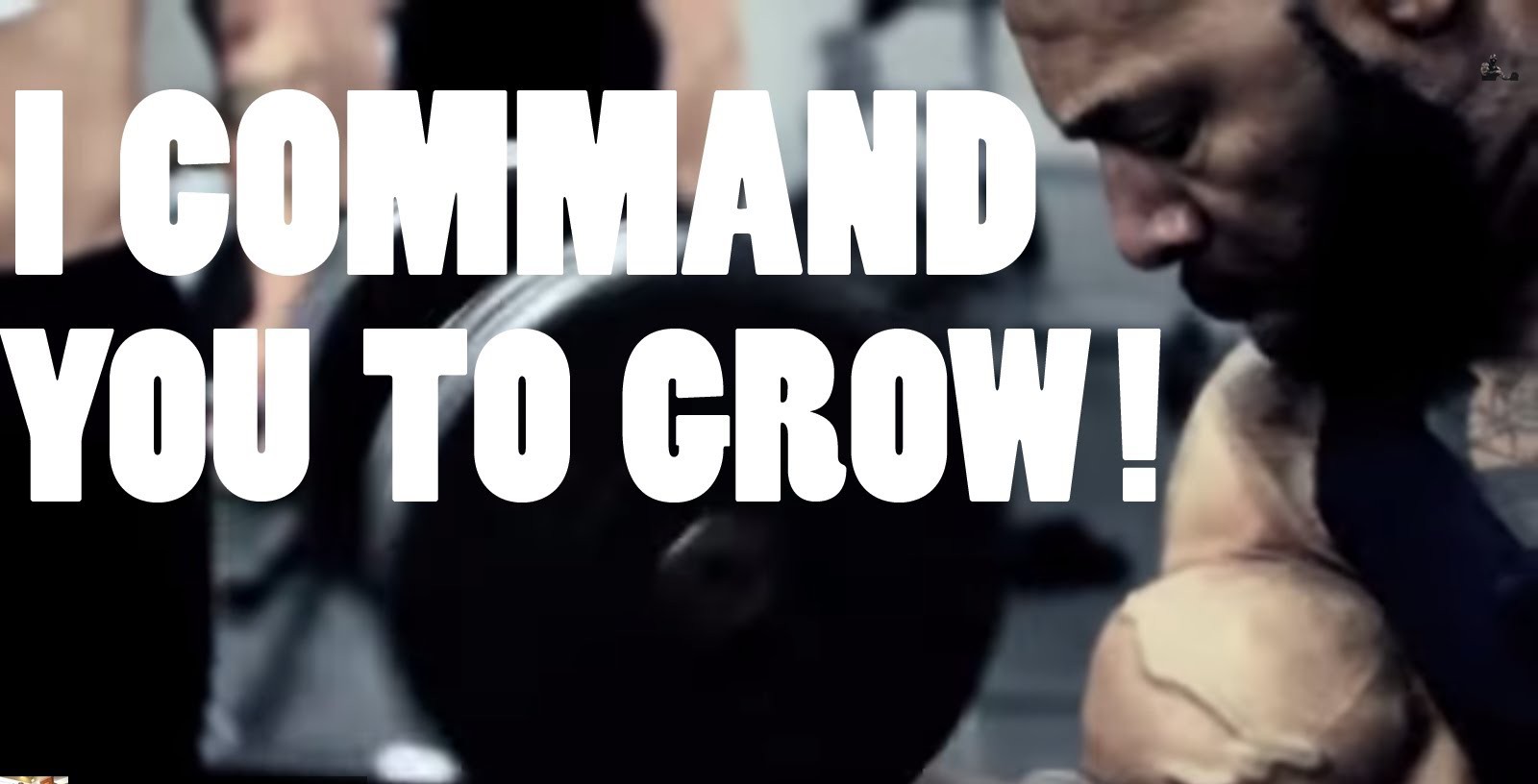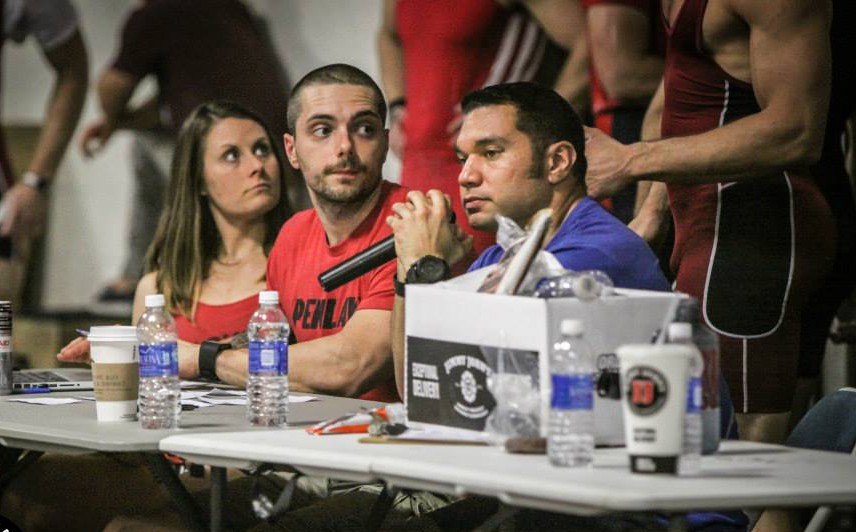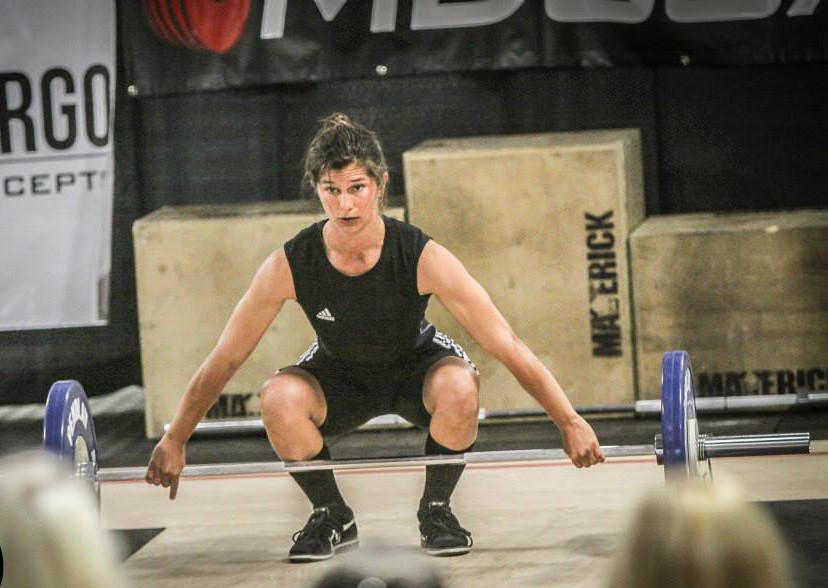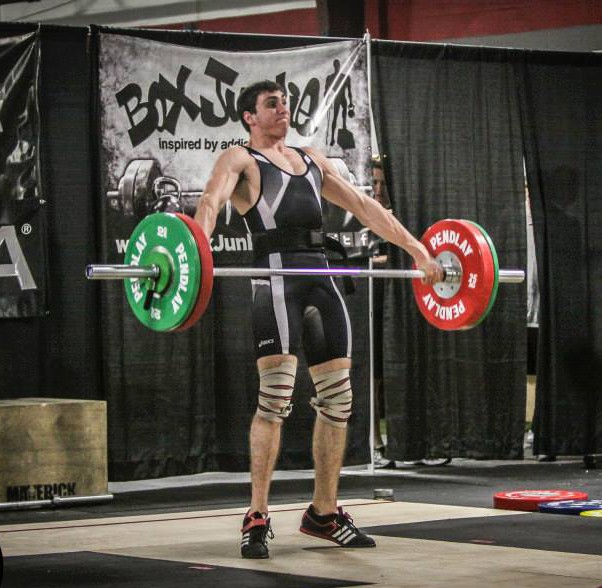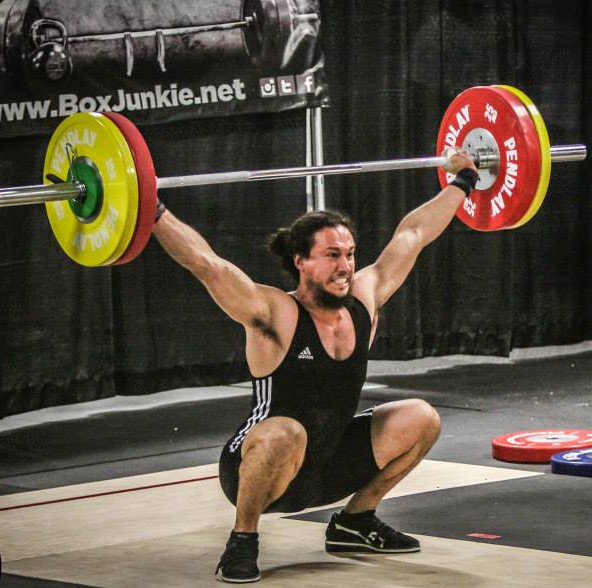Weightlifting is a healthy habit that builds strong bones and increases quality of life.
Workout less, Eat More Food
Some people have a hard time getting to the gym, but for others going to the gym is a necessary part of life, an addiction, even. Exercise becomes a controlling mechanism, it is a way for us to seize control of our bodies and health. It is proactive. It is a concrete action with immediate and long-term benefits. Conversely, rest and recovery feels passive: sit, breath, lay down, relax, do nothing. Doing nothing feels counter to your goals of acquiring the physique of your dreams, that 500 pound back squat, that first pull-up, or that six minute mile. Yet, rest and recovery can mean the difference between gains and stagnation, fat-loss or fat retention (especially in unwanted areas).
Even food becomes counter to your goals. You start to feel like eating will only make you fat, or that feeling full is somehow bad, or that certain foods are "bad," or "evil." You notice that, while you're full, you look "fat," so you begin to associate eating well with fat gain. Some of us fall into a cycle of deprivation, starvation, breakdown and binging, which leads to hopelessness and guilt, then a repetition of the process; deprivation, starvation, binge, repeat. Eating disorders, and disorders in general, exist on a spectrum, and people of all shapes, sizes and athletic backgrounds struggle with food, especially as humans in this modern age, where there is food, but there are also edible food-like substances.
Workout less, eat more food is counter intuitive. It sounds like a recipe for fat gain, but if you are working out six or seven days a week, even five days a week, this may actually be a recipe for muscle gain, hormonal recovery and reduced fat in unwanted areas, like the abdomen and supra iliac, as hormone levels influence fat storage on the body. If you are working out relentlessly, without seeing the physical changes you desire, assuming that the programming is sound, the answer may not be more work, but less work, more food and more rest.
I have seen a tendency for ambitious athletes to favor "recovery workouts" or "active recovery" over more passive means of recovery, but I think, in most cases, this is a mistake, because it becomes an excuse to workout every day and spend more energy when we should be reserving our energy for muscle growth and adaptation. Chances are, if you are doing recovery workouts, you are using them as a means to achieve fat loss rather than recovery, thinking that expending more energy is going to get you that jaw-dropping six-pack, or even just a reduction in belly fat. Again, nutrition is the answer here, not more running and random activity. And, once again, recovery, specifically passive forms of recovery, like massage and meditation, can be more effective in achieving fat-loss, muscle growth, health and overall wellbeing.
Though it feels passive, recovery is proactive, as you must create the conditions for optimal recovery. Though there are many forms of active recovery, the optimal form of recovery is meditation. Massage is also crucial, especially if you are an athlete who trains three to five days a week.
When you train, you are applying stress to your body. Because this is wanted stress, we look at training as a eustressor, a positive, desirable stress. However, stress is stress, whether perceived as positive or not. Chronic application will have negative effects, though symptoms will be hard to pinpoint, and will be different for everyone.
You may not feel anything. You may just stagnate; hit a ceiling. Maybe, once in a while, or even on a regular basis, you'll feel a certain malaise. Maybe you've been living with it for so long, you forgot what it feels like to feel energetic and hungry. So hungry that you don't fear workouts for malaise, you crush them out of hunger, because you need to make it count, because you're not run-down. You've got gusto, fire, and testosterone (ladies, too). You don't just go through the motions, you attack the workouts with vigor and enthusiasm.
Ambitious athletes like to feel beat-down. They like the feeling of a grueling workout and the aftermath--the euphoria. I like it, too. That runner's high. That feeling of putting in a solid day of work. I understand why you do it. I did it, too. But I'm telling you now that you need to chill!
[youtube https://www.youtube.com/watch?v=JUGisre9xNU&w=640&h=480]
Of course, I guess I have to underscore that consistency is always key. I'm not saying, don't workout for a week, then go hard, or that two days a week is enough to see results. I'm saying that if you are the kind of person who works out 5+ days a week, for more than an hour a day, consider what I have outlined above. Consider some silent meditation, instead of a recovery run. Increase intake of whole foods, especially organic, local vegetables and fruits. Give yourself room to not do a conditioning piece five days a week. Give yourself room to grow.
Recently, I have taken the luxury of removing conditioning from some days, so that athletes are only doing 3 conditioning workouts a week. Still, we are lifting heavy, completing one of the most feared squat programs on the planet: Smolov Jr. A squat program that demands that you eat and recover. I know some of you feel like you need to do a conditioning piece five days a week, but I've got news for you: doing that extra row, or run, or whatever, unless it is strictly skill work, is not doing you any good, neither for muscle gain, nor for fat loss. Again, nutrition, and rest, especially if you are working out 5 days a week, is the answer, not more work.
Professional athletes workout long hours, but they also spend time on recovery as soon as they are done training, and they have off-seasons. Remember that: off-season. They have an entire season, when in some cases, they do not practice their sport at all. Furthermore, there is a tendency in sport to use substances that enhance recovery potential. That's how some athletes can put in 6 hours of work a day and recover. Without a doubt, top athletes in unregulated or under-regulated sports (like Crossfit, or Grid Sport) are using performance enhancing drugs. You don't have a structured off-season, and you're not on growth hormones, so pace yourself. Technically, this is our "off-season," if we take the Crossfit Open to be our five-week season, hence the drop in the amount of wall ball shots, and conditioning in general. Still, our total work output remains the same, and we have not reduced the load or volume, but have increased it slightly, especially when we consider the demanding nature and intensity of Smolov Jr., and the back squat. Just like the deadlift, the back squat is very demanding on the central nervous system, and because of the high loading potential, requires more time to recover from than, say, a heavy snatch or a heavy clean. You may feel like you are tip-top, but in the midst of Smolov Jr., you most likely are not.
Sometimes, doing nothing is doing everything. The potential for growth is increased when we eat well, sleep, and rest. Growth happens outside of the gym, not in it. The only thing in the gym is poison, and all you need is a little bit, a non-lethal dose. Too much or too little, and you will not grow, or your growth will be mediocre, at best.
Maybe I have described you in this article. Maybe you are feeling a little hurt, maybe even like I am talking to you personally, but I'm not; the issues outlined above are common. But, I have to say, that if I have described you, you are a woman/man after my own heart. I love ambition in the gym. I love people who love the grind. People who don't complain about work. People who don't make excuses. People who dive in, all in. People who do work and love it. People who are willing to go the extra mile. But, as your coach, I know that running your body into the ground and under-eating is not a recipe for success in the long-term. Workout less, eat more food. If you are inconsistent at the gym, or are a sedentary individual, this article isn't for you; get into the the gym, go on a run, play and be active. For some of you, though, this may be the best advice to achieve your goals of fat loss, muscle gain, increased power and increased strength.
The Black Box Classic
A few weekends ago, The Ark Barbell Club entered its first weightlifting meet as a team at Crossfit Blackbox in Tallahassee, Florida. Donny and I had picked out this meet many weeks in advance, because it coincided perfectly with the end of our training cycle. The team prepared specifically for this meet. At a weightlifting meet, the first thing an athlete does is weigh-in. When athletes weigh-in, they are asked for their first attempts in the snatch and the clean and jerk. Their weight-classes and first attempts are written on a score card. These cards are then placed in order according to the athlete's declared first attempt at the score table.
The first lifter is the lifter who's first attempt is the lightest. As lifts are performed, the barbell climbs in weight. If the lifter makes the lift, she will increase the weight on the barbell for her next attempt by declaring her next weight to the officials at the score card table. If the lifter misses the weight, she will usually keep the same weight and follow herself on the platform, or another lifter whose next lift is the same weight will attempt a lift. In some cases, the lifter, even after missing the weight, may choose to increase the weight. An athlete may choose to do this for strategic purposes, especially if she is confident that she will make the lift. However, if an athlete misses all of her snatches or clean and jerks, then she doesn't "total." A "total" is the sum of an athlete's best snatch and clean and jerk. Entry into regional, state, national and international competitions is based on qualifying totals, and winners of competitions are chosen based on their totals. So, athletes NEED to total, which means, make at least one snatch, and one clean and jerk.
A weightlifting meet is down tempo. If Crossfit competitions are heavy metal, weightlifting meets are roots dub. Spectators usually comment on the tranquility of the event; not very much noise except for the periodic grunt and dropping of weights and applause. Before the lift, there is always a deep moment of silence, before being broken by the clash of steel with flesh. Then, three judges who sit to the front and off to the sides of the lifter proclaim their judgement: white or red--good or bad lift. The chatter rises then subsides again as the next lifter approaches. The master of ceremonies calls out lifters, and tells the loaders how much weight to put on the barbell. The loaders, who carry more weight than any competitor, scurry on and off the platform like ants, breaking down and adding weights to the bar.
Spectators become enthralled with lifters, each with there own idiosyncrasy and approach to the lift; sometimes fierce and emotional, sometimes quiet and serene, sometimes scared and unsure. Without a question, athletes are placing themselves in the arena of sport to be judged. They are being tested. They are testing themselves. They are testing their methods. Just by stepping onto the platform, they have demonstrated courage and humility, because they have faced the fear of failure, the fear of failure in front of others, the fear of injury and the fear of humiliation. To step onto the platform is to conquer fear; to own it and embrace it.
Weightlifting competition is all about timing. Coaches count the approximate number of lifts before their lifter's turn to ensure for timely and adequate warm-up lifts. Sometimes, things don't go as planned. For instance, if a lifter declares 100kg for their first attempt, and you have declared 102kg for your first attempt, the assumption is that you will lift right after the lifter at 100kg. The problem arises when the lifter misses the lift, then repeats, then misses again, then goes for a third attempt at 100kg. There you are, thinking you are next, warmed up and ready to go, and all of a sudden, you have been waiting 4 to 6 minutes to lift. But this cannot throw you off, you must be ready for the unexpected.
Weightlifting is a mental game. Athletes choose their openers based on how much they have lifted in the past, and based on a performance goal for the meet. Open up too light, and reaching that PR (personal record) lift becomes more challenging due to the larger weight increases. Open up too heavy, and you run the risk of missing your first attempt, which is a confidence crusher. Usually, a first attempt should be a weight you can hit on a consistent basis. I like to open up conservatively, then make a medium jump up to a challenging weight (not a PR). If I hit my second attempt, I'll go for a PR, or a near PR, based on how I'm feeling that day. The point is, you've hit your openers before, so hit them on the platform. Missing your openers exposes one of two things: either you were over zealous in choosing your opener, or your mental game and consistency needs work--get your head straight and hit the weight!
[youtube https://www.youtube.com/watch?v=PzF45Lh42RU&w=560&h=315]
Every athlete should strive for a six for six performance. When you go six for six, you've made every attempt at the meet: three snatches and three clean and jerks. But, then again, six for six will not win you the meet, nor will it qualify you for the next level of competition. Still, setting the bar high for yourself, even if that means hitting modest weight, or not hitting a personal record, will set you apart from the other competitors. Make your goal six for six every meet.
Furthermore, athletes should differentiate between meet PRs and training PRs. This way, one can still progress their development without the added pressure of making all-time PRs at every meet. A training PR will not qualify an athlete for national competition. A meet PR will. Differentiate between the two. Set realistic goals and track your meet progress as you would your training progress. An all-time PR attempt should be a reward for hitting the previous two lifts. And, even then, a PR lift should only be taken if one is confident that she will make the weight, not a wishful attempt at a weight one has no chance of making.
The Black Box Classic was our first weightlifting meet as The Ark Barbell Club. Everyone totaled, two of our lifters won gold in their weight classes, and we had some gym members join us to spectate and support the team. For me, it was a very positive experience, and I'm looking forward to my next meet. The best part was getting together afterwards, eating some good food, and sharing time to talk about the meet, what happened, and where we want to go. The second best part was going six for six, and setting an all-time personal record at 132kg for the clean and jerk.
Competition is a learning experience. When you are on the platform, you learn about yourself. When you are in competition, you learn about yourself. Competing is a sure way to improve your skill and training. Without it, you'll miss out on mental and physical development. I really believe that. Competition is never comfortable. It is never nice to fail in the presence of others. But still, it is a necessary part of growth. Discomfort is a sign that you are doing things right; feel the fear and do it anyways. If something scares you, that is your signal that it is a worthwhile endeavor. Do it. There are too many people who let fear repel them. Let fear fuel your fire.
The Ark is proud to announce that we will be hosting our second ever USAW sanctioned weightlifting meet on Saturday, June 20th, 2015. We encourage all lifters in and around Gainesville and north central Florida to participate. We hope to have similar attendance to our last meet and we look forward to serving athletes from our city and surrounding areas. You can look forward to good food, chill vibes, and strong, attractive athletes lifting heavy barbells. Hope to see you there! In the meantime, sharpen your skills, sharpen your mind, and stay healthy. See you at the next meet.
All photos credited to Crossfit BlackBox
The Importance of Restoration
The most overlooked aspect of training for performance is recovery. Most of the time, athletes equate recovery with doing nothing—vegging out on the couch and getting fat. Most athletes would rather run their bodies ragged for fear of gaining weight or losing gains. The truth of the matter is this: gains happen when you are NOT working out. Gains happen when you sleep, when you hydrate and feed your body. Absent a solid recovery regimen, the cornerstone of which is sound nutrition in accordance with your goals, supplementation and rest, gains will be absent and injury more probable.
Yesterday, a member came into the gym on two hours of sleep, dehydrated. This person was on his way to crushing yesterday's workout. After he finished his wall-ball shots, he dropped to the floor in agony from muscle spasms. I honestly thought he popped his calf muscle. Luckily, there were three LMTs present who came to his rescue, who also confirmed that he was experiencing severe muscle spasms, that it wasn't serious, and that he's a drama queen.
I have also made similar mistakes, favoring training over recovery, even when I know that my body needs the rest. These are the times when I have hurt myself; when I have let my ego overrule my body's need for restoration. Don't make this mistake!
It is not always clear when we absolutely need rest. Sometimes I feel a little tired, and maybe my willingness to train is down. I usually train on those days—shoot, sometimes on those days when my willingness to train is down, I may even PR. But, if you feel like absolute garbage, take the day to explore restorative activities, not activities that will deepen the hole you are already in.
The moral of the story is this: recovery is essential. If you are short on sleep, and you have not been taking care of yourself, it's okay to air on the side of caution and take the time you would be working out to focus on recovery. It may save you from injury—a situation which will FORCE you to recover for an extended period of time.
Take the time today, and every rest day, to be PROACTIVE with your recovery. Here are a few suggestions:
1) Take an Epsom salt bath with warm water. 2) Light foam roll or lacrosse ball work 3) Do some Yoga with a focus on breathing and meditation 4) Seated meditation and deep breathing 5) Go get a massage.
Take your recovery as serious as your training. Your life will be long and your gains will be great!








